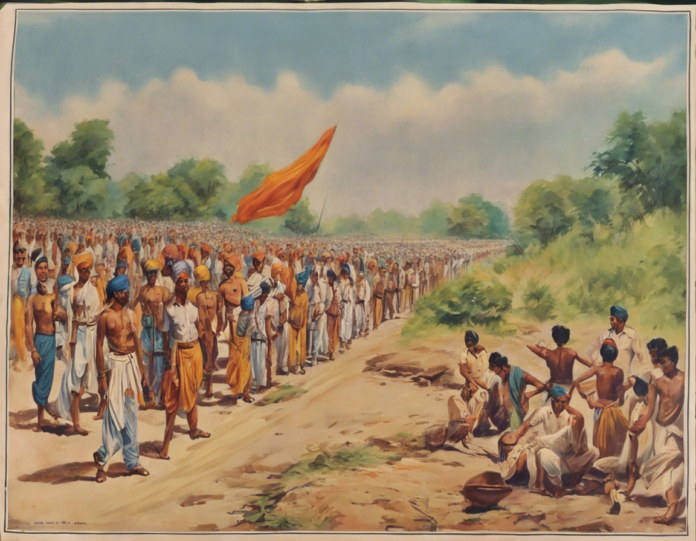India is a vast and diverse country, rich in culture, history, and natural beauty. With its 29 states and 7 union territories, India is divided into a total of 718 districts as of the latest census data. Each district is administered by a district collector or deputy commissioner, who is responsible for overseeing the various administrative, developmental, and law enforcement activities within the district.
Overview of Districts in India
How are Districts Formed?
- Formation: Districts in India are formed based on various factors such as population size, geographical area, administrative convenience, and historical significance.
- Purpose: The primary purpose of a district is to facilitate decentralized governance and administration, ensuring that government services and programs reach the grassroots level effectively.
District Administration
- District Collector: The district collector is the head of the district administration and is responsible for revenue collection, law and order, and overall administration in the district.
- Sub-Divisions: Some districts are further divided into sub-divisions or tehsils, each headed by a Sub-Divisional Magistrate (SDM) who assists the district collector in administrative functions.
Importance of Districts
- Local Governance: Districts play a crucial role in local governance, with elected representatives such as Members of Parliament (MPs), Members of Legislative Assembly (MLAs), and local bodies like Panchayats working at the district level.
- Development: Districts serve as administrative units for planning and implementing various developmental projects and schemes aimed at improving the socio-economic status of the local population.
Distribution of Districts in India
- State-wise Distribution: The distribution of districts in India varies from state to state, with some states having a larger number of districts due to greater geographical and population diversity.
- Uttar Pradesh: The most populous state in India, Uttar Pradesh, has the highest number of districts with 75 districts.
- Largest District: Kutch in Gujarat is the largest district in India by area. In contrast, Mahe in Puducherry is the smallest district in the country.
Examples of Districts
- North 24 Parganas: Located in West Bengal, North 24 Parganas is the most populous district in India.
- Leh: The district of Leh in the union territory of Ladakh is known for its stunning landscapes and Buddhist monasteries.
Evolution of Districts in India
- Historical Background: The concept of districts in India has evolved over centuries, with the British colonial administration playing a significant role in establishing the administrative framework of districts.
- Post-Independence: After independence, India reorganized its states and districts to promote better governance and administration, leading to the current structure of districts in the country.
Challenges and Issues
- Disparities: Disparities in development and access to resources exist between districts in India, with some districts being more developed than others.
- Administrative Capacity: Ensuring effective governance and service delivery in all districts, especially in remote and underdeveloped regions, remains a challenge for the Indian government.
Future Outlook
- Digital Initiatives: The Indian government is leveraging digital technologies to improve governance and service delivery in districts through initiatives like Digital India and e-Governance.
- Sustainable Development: Efforts are being made to promote sustainable and inclusive development across all districts in India to address regional disparities and foster balanced growth.
FAQs
1. How many districts are there in India?
India is divided into a total of 718 districts as of the latest census data.
2. Which state in India has the highest number of districts?
Uttar Pradesh has the highest number of districts in India, with 75 districts.
3. What is the role of a district collector in India?
The district collector is the head of the district administration and is responsible for revenue collection, law and order, and overall administration in the district.
4. How are districts formed in India?
Districts in India are formed based on factors such as population size, geographical area, administrative convenience, and historical significance.
5. What is the purpose of districts in India?
Districts in India serve the purpose of facilitating decentralized governance and administration, ensuring that government services and programs reach the grassroots level effectively.
6. Which is the largest district in India by area?
Kutch in Gujarat is the largest district in India by area.
7. Which is the smallest district in India?
Mahe in the union territory of Puducherry is the smallest district in India.
8. How have districts evolved in India over time?
The concept of districts in India has evolved over centuries, with the British colonial administration and post-independence reorganizations playing a significant role in shaping the current district structure.
9. What are some of the challenges faced by districts in India?
Challenges faced by districts in India include disparities in development, access to resources, and ensuring effective governance, especially in remote and underdeveloped regions.
10. What initiatives are being taken to improve governance in Indian districts?
The Indian government is leveraging digital technologies, implementing initiatives like Digital India and e-Governance, and focusing on sustainable development to enhance governance and service delivery in districts.
